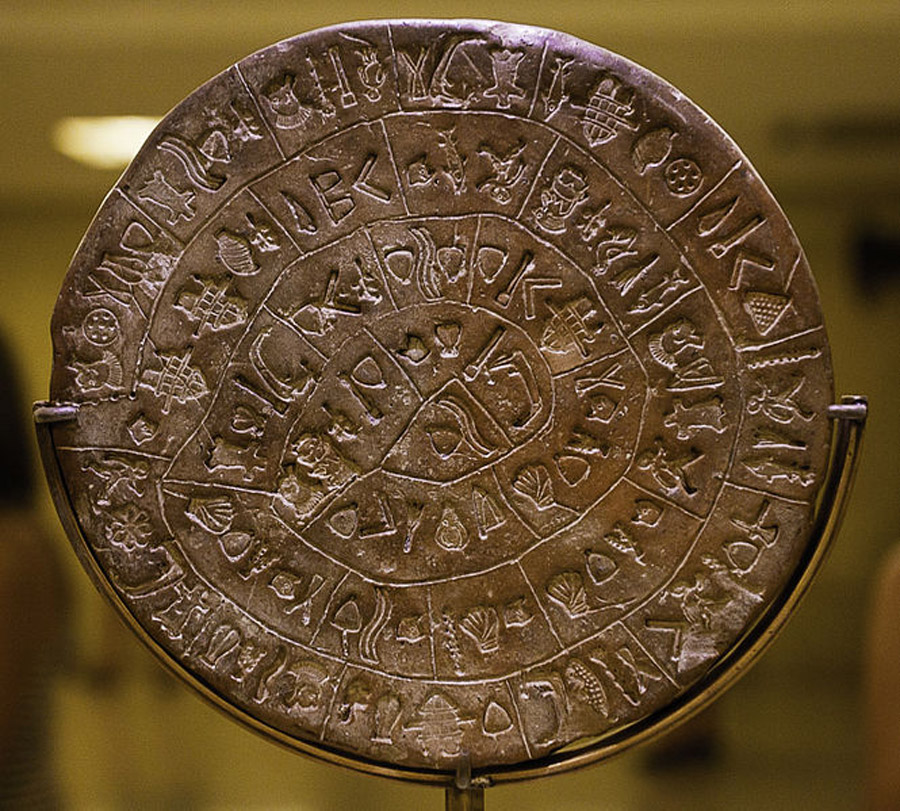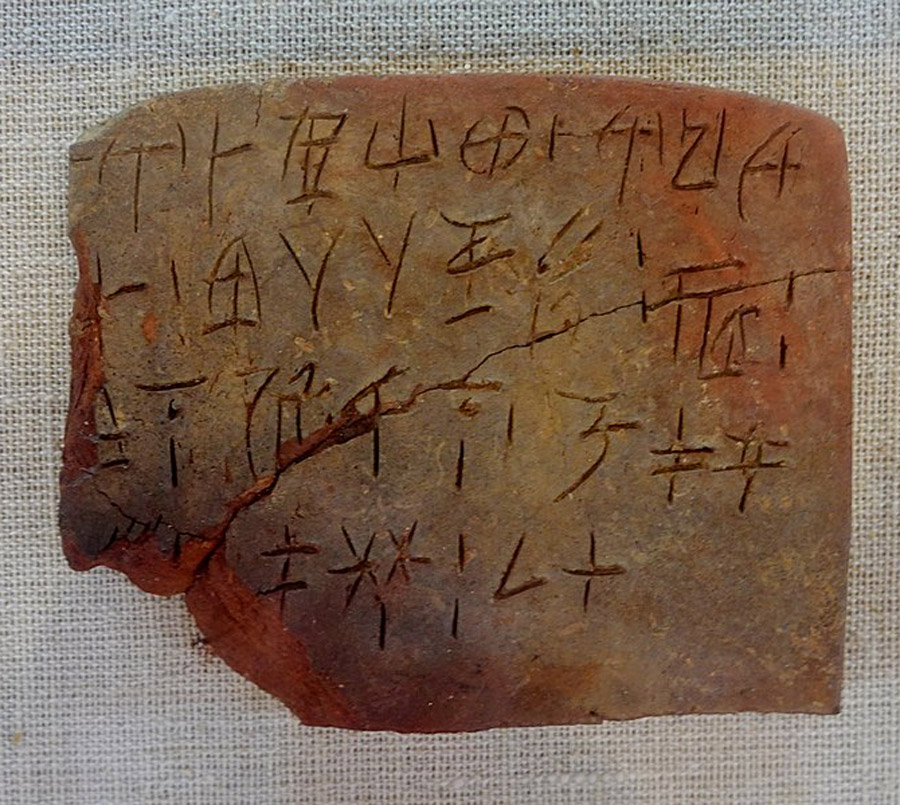In 1908, an Italian archaeologist named Luigi Pernier was undertaking an excavation at the Minoan Palace of Phaistos, on the Island of Crete. Among the expected finds was something a little more unusual: a fired clay disc, around 5.9 inches (15 cm) in diameter, with a spiral of stamped symbols on both sides.
Possibly dating to the late or middle Minoan Bronze Age (2nd millennium BC), the purpose of this disk and the original manufacturing place is still a mystery. It features around 241 individual markings, made up of around 45 different signs.
For much of the twentieth century the disc was an enigma, a text written in ancient Minoan, but an apparently undecipherable one. The most recent attempt has been made by linguist Dr. Gareth Owens, of the Erasmus of Crete Technological Institute.
It took 30 years of time and devotion for Dr. Owens to solve the puzzle, but he believes that the mystery of Phaistos Disc is now “99%” solved.
The Ancient Minoans
The ancient Minoans were a bronze age civilization who ruled over Crete and the Aegean sea in the Mediterranean for 2,000 years. Their empire was the first sophisticated civilization in Europe.
Growing rich from trade and conquest on the seas, they built huge palaces, up to four levels high. Phaistos is a huge example of such a palace, second only to the great Minoan palace at Knossos.

But this great civilization is also a silent one. The Minoans had a language which evolved during their reign, one which is most easily understood if split into two. The earlier and more common “Linear A” was apparently used by the Minoans from about 1850 BC to write their own language.
The less common “Linear B” evolved from this to apparently write an early form of Greek. And while this has been deciphered, the Phaistos disc remains a mystery as the apparent translation is unclear.
Some even believe the disc to be a fake, and the great Minoan civilization remains largely a mystery. Could the Phaistos disc by the key to understanding ancient Minoan Linear A?
The Phaistos Disc and the Magliano Disc
The Phaistos Disc is not alone, however. In 1880 in Italy, a disc of similar shape, and with similar symbols and engravings was discovered, called the Magilano Disc.
However, while the form is similar the language is different. The spiraling text of the Magliano disc has been identified as Etruscan.
The Phaistos and Magliano discs are the only two discs of this specific kind that have been discovered so far. It is thought that the discoverer of the Phaistos disc, Luigi Pernier, must have known about the other disc as well.
Unfolding the Mystery of Phaistos Disc
In the end it was not just the text that offered to key to reading this disc, as the symbols on it are not recognized from any alphabets, ancient or modern. The Minoan goddess of love, Astarte, was the key to unlocking the mystery of this disc through her Eastern counterpart, Ashtart.
The symbols on the disc seem most to resemble Linear B. Other symbols found on the disc are similar to that of the hieroglyphs found in ancient Anatolian sites.
Attempts at translation therefore focused on Linear B, as well as other Indo-European languages which may have contributed to ancient Minoan. But the issue with this approach is that it concentrated on reading the text, and not understanding the object as a whole.
Dr. Owens has concluded that based on a devotion to the “pregnant goddess” the disc is a religious text. From there he was also able to find similar references to the goddess of love, Astarte, on the reverse side. Once the connection had been made, everything else seemed to fall into place.
Key religious words appear on the text which are comparable with other inscriptions that originated in Crete’s holy mountains, and are known from Minoan religious offerings. As a result, the researchers suspect that this Phaistos disc was some sort of hymn before Astarte.
The scholars therefore believe that one side of the Phaistos disc is dedicated to that of a pregnant mother goddess, and the other to the known Minoan goddess, Astarte.
Much Work to be Done
This breakthrough does not however mean that the text can now be read, and Dr. Owens notes that only three words on the disc have yet been deciphered. Scholars working on the translation note that the mysterious symbols lack sufficient context to be understood clearly.

The disc is on display at the archaeological museum in Heraklion, the capital of Crete, and scholars and linguists are continuing to decode what’s imprinted or written over it. It is believed that the disc may offer insight into the mysterious, and so far silent, Minoan empire.
For 100 years they have been trying. Maybe this new breakthrough will allow the disc to be understood, and maybe in turn this will offer other insights into the Minoans. But for now these people of the sea are keeping their secrets.
Top Image: Could the deciphered Linear B lead us to read Linear A also? Source: Josef Laimer / CC BY 2.0.
By Bipin Dimri
References
The Phaistos Disk refers to the goddess of love who glows and grows dim. Available at: https://www.archaeology.wiki/blog/2018/02/09/102801/
Archaeologist Solves Mystery of the Phaistos Disc in Greece. Available at: https://greekreporter.com/2021/07/05/phaistos-disk-mystery-solved/
Phaistos Disc. Available at: https://en.wikipedia.org/wiki/Phaistos_Disc
10 Things You Probably Didn’t Know About the Phaistos Disc. Available at: https://curiosmos.com/10-things-you-probably-didnt-know-about-the-phaistos-disc/
The Phaistos Disc. Available at: http://www.ancient-wisdom.com/phaistos.htm